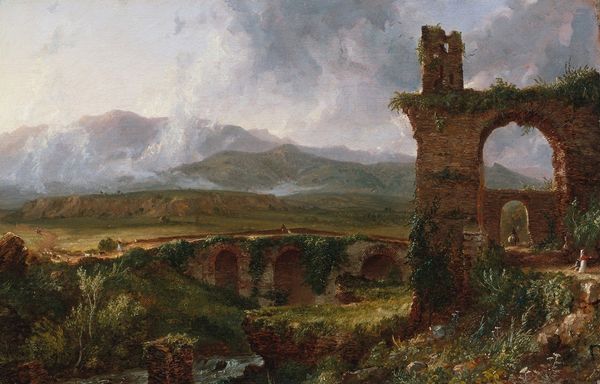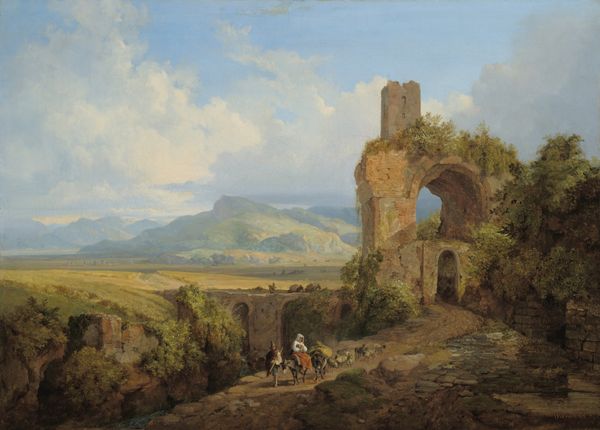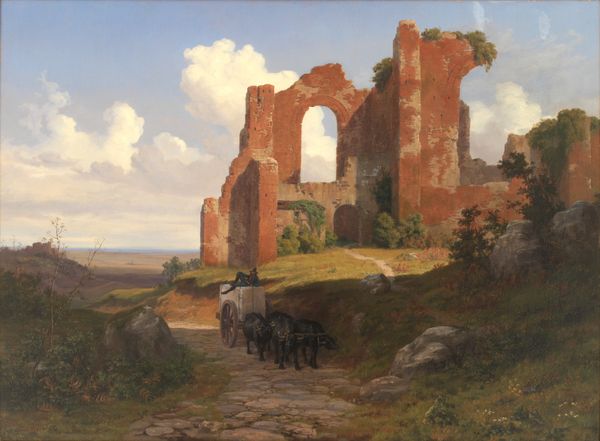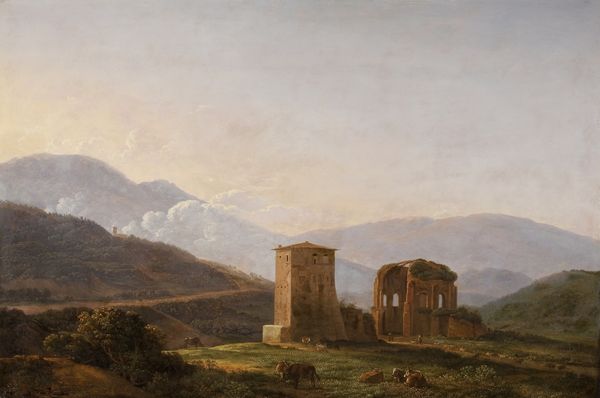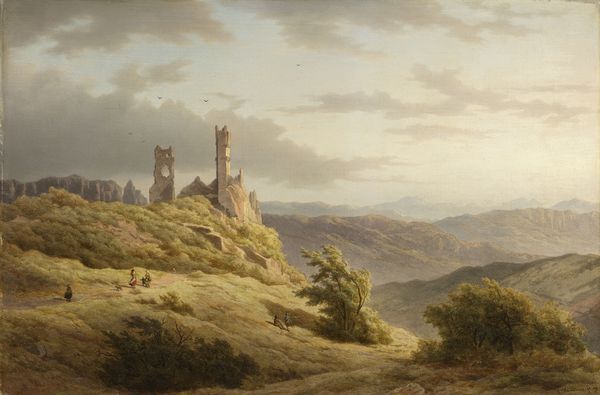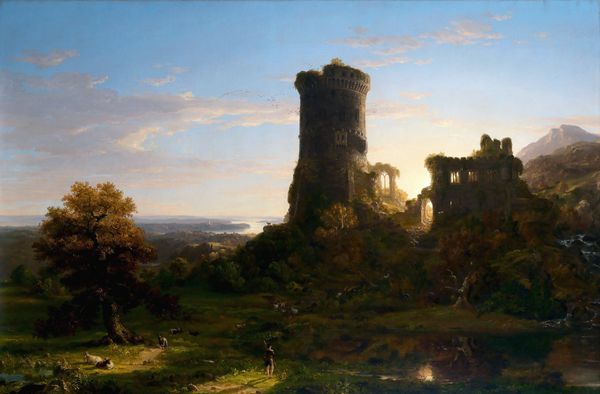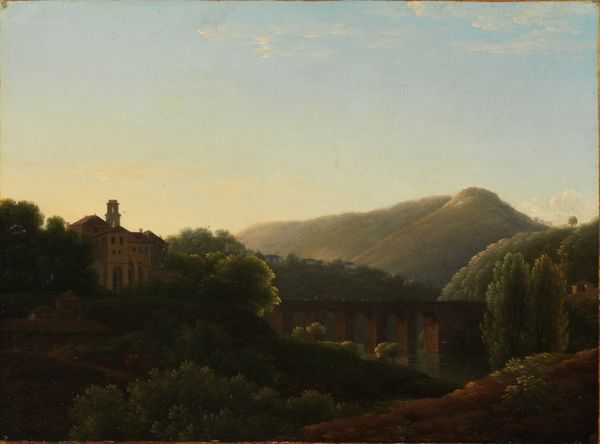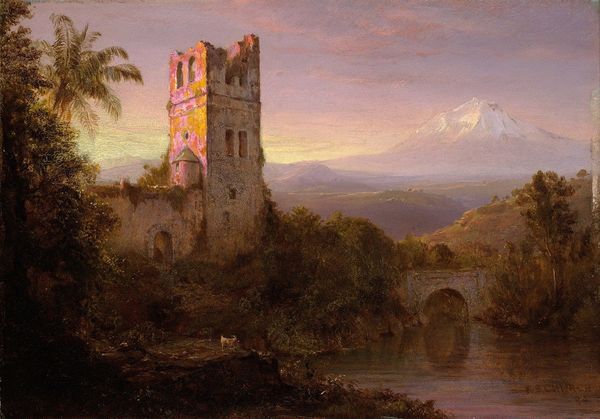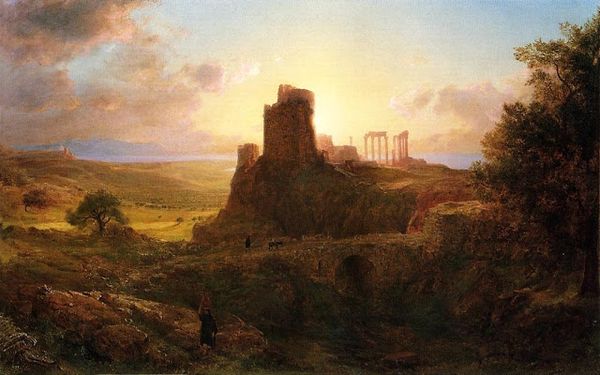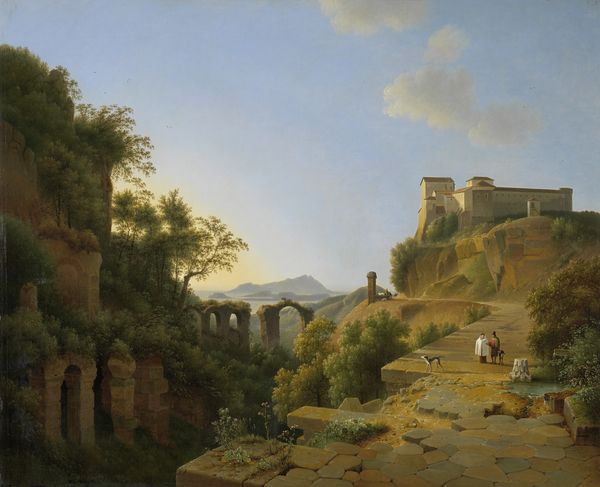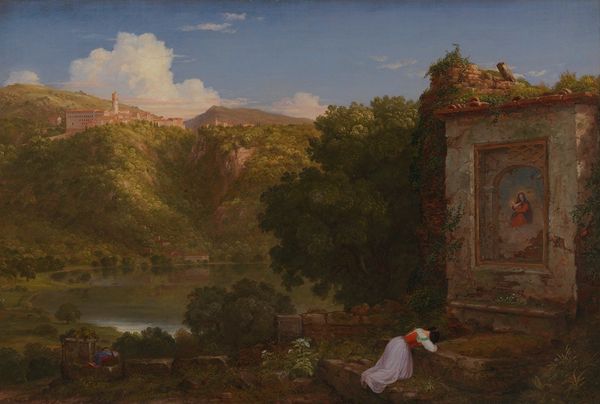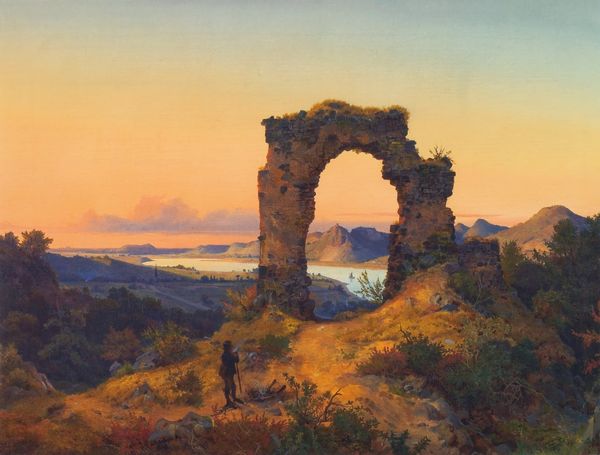
oil-paint
#
oil-paint
#
landscape
#
classical-realism
#
romanticism
#
history-painting
Copyright: Public Domain: Artvee
Here we have "The Arch of Nero," painted by Thomas Cole during the 19th century. Cole, a founder of the Hudson River School, often imbued his landscapes with moral and historical reflections. The painting depicts a romanticized Italian landscape, featuring the ruins of an ancient Roman aqueduct. Cole’s choice to paint this subject is significant. It reflects the 19th-century fascination with the grandeur and decay of past civilizations, a sentiment deeply tied to notions of cultural identity and historical continuity. For many artists of European descent, Rome was regarded as the 'cradle of civilization'. Cole's work can be seen as a commentary on the transience of power and the inevitable decline of empires. But look closer: the presence of shepherds and peasants amidst these ruins also brings questions of class and labor into play. It evokes the lives of those whose present is intimately tied to the remnants of a glorious past. Ultimately, "The Arch of Nero" invites reflection on the cyclical nature of history, and how past civilizations continue to shape our present-day identities.
Comments
No comments
Be the first to comment and join the conversation on the ultimate creative platform.
